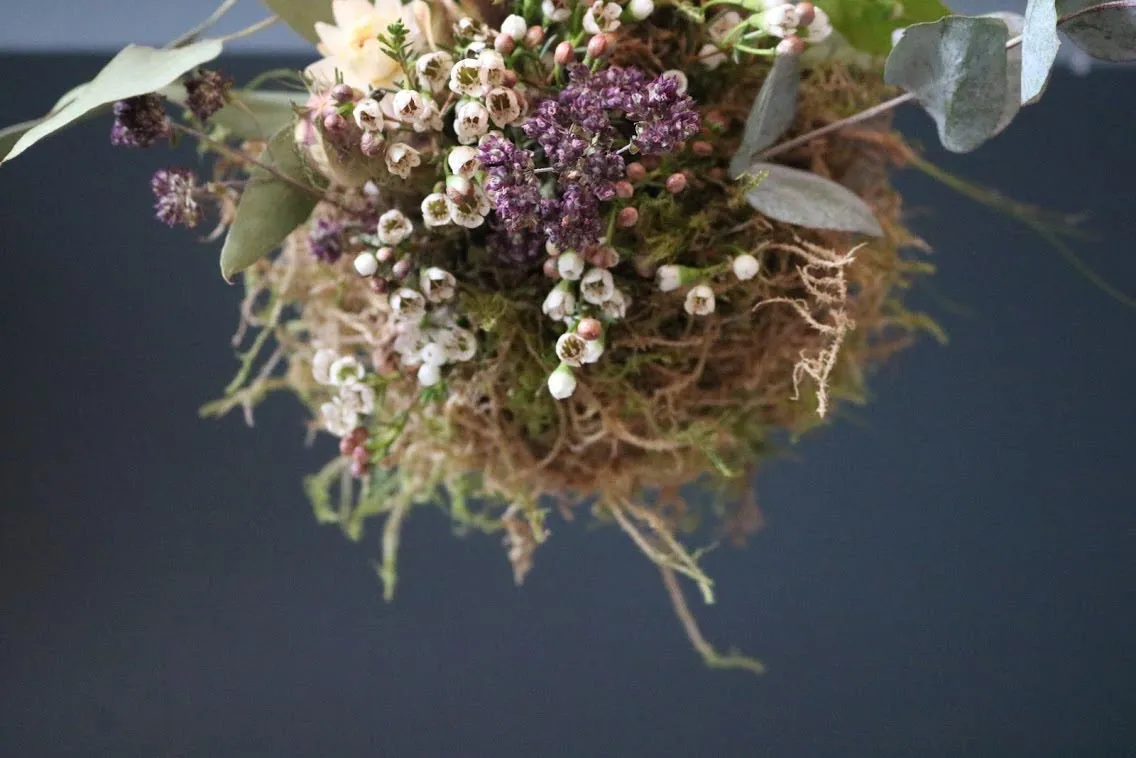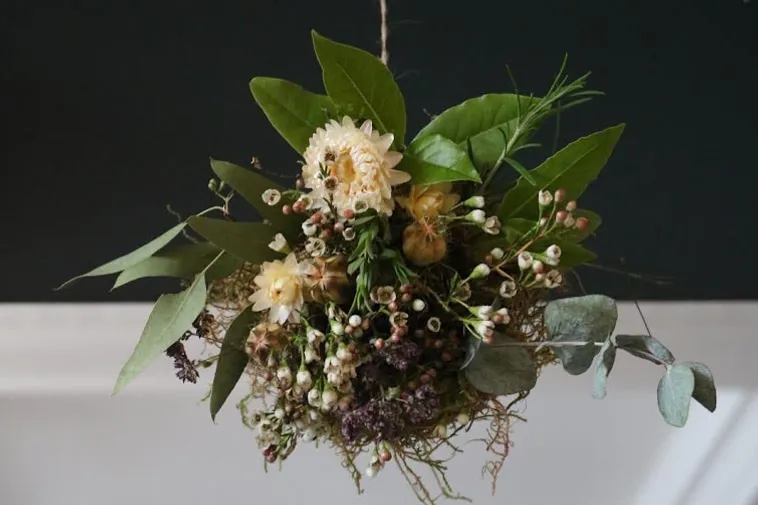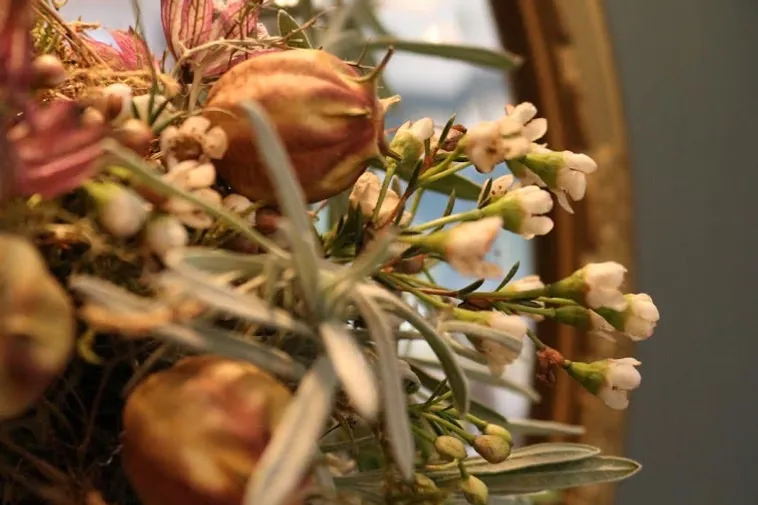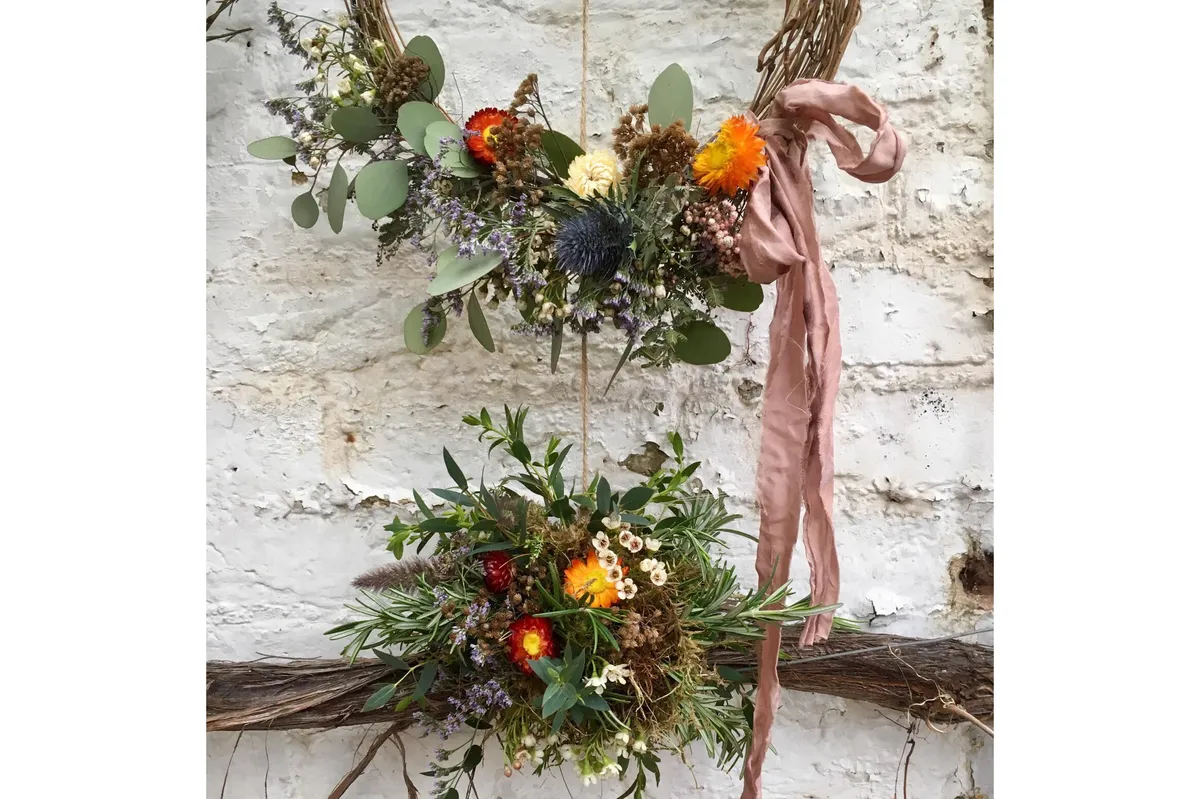Weaving aromatic herbs, everlasting flowers, symbolic foliage and berries and plant-dyed silk ribbon into a modern take on the Victorian kissing ball is a lovely way to usher seasonal nature and a little bit of festive flirtatiousness into your home alongside traditional garlands and wreaths.
For all our festive content head to our Christmas hub
What are kissing balls?
While garlands, boughs and loose balls of evergreens such as holly and ivy were all popular Christmas traditions of the Middle Ages, melding Pagan folklore with Christian representations, it was the Victorians who took festive greening to new heights with towering, bejewelled Christmas trees and a new romantic notion known as the kissing ball. A symbolic and fanciful response to the sixteenth and seventeenth century Puritan backlash on all things idolatrous, these aromatic herb-laden 'kissing' balls were hung in strategic places around the home or in supersized versions from the ceilings of ballrooms under which guests would dance and perhaps share a kiss under the incorporated mistletoe.

Back then, herbs foliage and flowers were traditionally stuck into an apple or a potato, using a ribbon around its circumference; a fun yet perishable project for décor that lasts a few days or to make with kids. To extend the experience – and hopefully the romance – across several festive weeks, author of The Heritage Herbal, Sonya Patel Ellis, explains how to update the kissing ball using foam-free floristry techniques, sustainable moss, everlasting foliage and flowers, symbolic herbs and the prettiest plant-dyed saree silk.
How to make Christmas kissing balls
The tools you need
- Secateurs
- Gathering basket
- Wire cutters
- Floristry scissors
- Craft scissors
- Non-reactive pan and sieve (for dyeing saree silk)

The materials you need
- Chicken wire (25mm/1inch gauge holes)
- Brown floristry wire
- Sustainable sphagnum moss (sourced from a responsibly managed, local site)
- Fresh or dried herbs such as rosemary, thyme, winter savory, bay, oregano and marjoram
- Everlasting or dried flowers such as strawflowers, achillea, astrantia and cornflowers
- Evergreen foliage such as eucalyptus, reindeer mimosa, holly, ivy, box and fern
- Final flourishes such as hips, haws, pink peppercorns, love-in-a-mist seedheads, feathergrass and mistletoe
- Natural twine
- Skein of undyed saree silk ribbon
- 4 avocado stones and skins (washed) or 1 cup (100g/4oz) dried elderberries
- 4 cups (1 litre/1 quart) distilled water

Making your kissing ball
1. Cut a square of chicken wire from which to mould a sphere. This will form the core of your kissing ball. The chicken wire holes should overlap creating gaps into which moss, herbs, flowers and foliage can be pushed. A 30cm x 30cm (12 inch x 12 inch) piece of chicken wire is ideal for a final ball diameter of around 20cm (8 inch). Feel free to supersize for central statement pieces but be aware of the final weight once other materials are added.
2. Tie a length of natural twine onto the top of the kissing ball frame. This can be used to suspend the ball as you decorate it and as the final hanging device so ensure it is long enough for your potential needs.
3. Cover your sphere with small handfuls of sustainable sphagnum moss, stuffing it gently into the holes to secure. Don’t worry if tufts stick out as this adds to the charm.

4. Forage for herbs, flowers, foliage and berries from your garden or a local green space opting for stems that will look as good dried as fresh. Ask permission first if collecting from privately owned land and do your bit for biodiversity by leaving plenty in place for visiting pollinators, birds and other wildlife. Sprigs of box, reindeer mimosa, eucalyptus or fern are lovely as a first layer of evergreen foliage. Hardy herbs such as rosemary, thyme, winter savory and flowering oregano or marjoram add lovely scent as well as visual interest. Strawflowers (Xerochrysum, formely Helichrysum) and achillea come in a range of jewel-like shades and can be homegrown or easily sourced as dried flowers. Hydrangeas, astrantia, larkspur, amaranth, delphiniums, cornflowers and waxflowers also dry well and add gorgeous personality and detail.
5. Hang your moss-covered kissing ball from a doorway to help decorate in the round. Then build up an evenly balanced layer of foliage and herbs, cutting stems to size beforehand and using small twists of floristry wire to stabilise delicate or heavier items. A flourish of brighter everlasting flowers, rose hips, pink peppercorns, love-in-the-mist seedheads, plumes of delicate feathergrass (Stipa penata), pom poms of craspedia or echinops, or silvery honesty can help create focus and asymmetric appeal.
6. For the ultimate kissing ball, attach a sprig of mistletoe to the base accompanied by a long, loose, Victoriana-inspired bow of plant-dyed saree ribbon. Simply bundle the slightly frayed, loosely stitched, recycled ends of raw silk into a pan of homemade natural dye, turn off heat, let steep overnight, wring out and hang up to dry for a wonderfully subtle, lustrous sheen. Get warm, earthy pink tones from 4 washed avocado skins and stones boiled up in 4 cups (1 litre/1quart) of cold water in a non-reactive pan. Use 1 cup (100g/40oz) dried elder berries for a deep purple hue.
7. Hang your kissing ball in a covered doorway, porch or hallway, as a statement piece over a dining table or in the lounge, or scatter small versions throughout the house for beautiful lingering fragrance and unique botanical style.

What do the herbs you use for your kissing ball symbolise?
Add an extra layer of romance to your kissing ball by choosing symbolic herbs, a plant-inspired way to spread Christmas wishes of love, happiness and cheer. For more ideas, see The Heritage Herbal, a time-travelling exploration of 35 heritage herbs to nourish, heal and style:
Oregano
Traditionally known as the ‘herb of joy’ thanks to its bright pink-purple blooms and camphorous, citrusy fragrance
Rosemary
Said to strengthen the memory, promote fidelity between lovers and purify the air
Thyme
Favoured by fairies and an emblem of action, daring and courage, popular in the Age of Chivalry
Marjoram
Sweet, floral and woodsy, used for centuries as a soothing sleeping aid and warming, perfume note
Winter savory
Strongly aromatic and touted as a popular aphrodisiac ingredient in love potions dating back to ancient Rome
Kissing balls created by Sonya Patel Ellis (@theherbariumproject) in collaboration with potter and florist Jess Webb (@jess_._webb)
